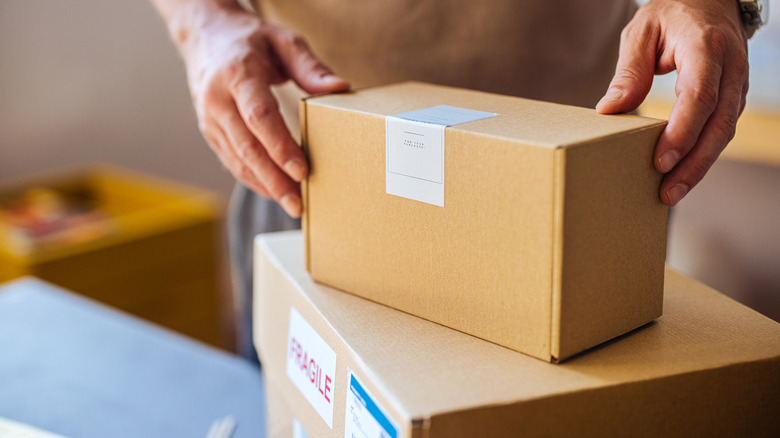Rick Steves Reveals When Shipping Things Home From Europe Is Smarter Than Stuffing Your Suitcase
With decades of travel experience under his belt, Rick Steves is all too familiar with how a European shopping spree can quickly derail into an expensive mishap, especially when it comes to declaring goods at customs or facing the reality of overweight baggage at the airport scale. All it takes is a cool vintage lamp from the maze of treasures found at one of the world's largest antique markets in Paris or an epic handcrafted cuckoo clock you got in Germany to turn your thoughtfully packed, Marie Kondo-esque suitcase into an overweight and costly mess.
Though Steves previously divulged his secret to souvenir shopping without the extra baggage, there are some things you just can't pass up during your travels — and that's where the dilemma of packing it in your luggage versus shipping comes in. If you absolutely cannot fit all your souvenirs and purchases in your luggage, it's time to weigh the pros and cons of shipping stuff back home. For Steves, the prospect of overweight luggage fees can make shipping items back home a smarter solution, especially if your purchases exceed the amount that customs allows you to bring back to American soil.
Overweight baggage fees can cost a pretty penny, especially if you're caught unaware. Delta, for example, charges anywhere between $100 and $200 for overweight bags, while a third checked bag starts at $150. So if you have time to spare navigating a European post office, shipping those extra pounds while staying within the $200 duty-free limit could potentially save you excess baggage or customs fees — the U.S. Customs and Border Protection agrees. "Shipping through the U.S. mail, including parcel post, is a cost-efficient way to send items to the United States," the website declares.
The ins and outs of shipping things back home while traveling in Europe
This loophole has certain caveats. Keep in mind that the items you're shipping should be marked as "personal purchases" and shouldn't go over the $200 duty-free allowance. You'll most likely have to declare your package's goods and value, so keep it simple and straightforward by mentioning the general category of the goods ("books" or "clothing" should suffice for the customs form, says Steves) along with their price.
If you want to send back cumbersome personal items you no longer need (such as clothes or shoes), they can be shipped back to the U.S. as "American Goods Returned." U.S. Customs and Border Protection notes that while AGRs are treated as duty-free items (no declaration is needed), you should be able to prove their American-made origins should they verify the contents of your parcel.
Also factor in postal service fees, which Steves admits can be expensive. But some Redditors have tried and tested the method and are all the better for it. A Redditor shipped clothes, olive oil, and other items from Florence through Poste Italiane, paying $70 for a 12-pound package. The shipment took 10 days to arrive. The conclusion? "Box was damaged but everything arrived in one piece."
If you're sending valuable or fragile pieces or need them delivered quickly, Steves also suggests looking into the expensive yet ubiquitous DHL. A Redditor gave this method a thumbs-up: "We sent back 10kg of Olive oil, balsamic vinegar, plant based Nutella and a couple of bags, it was $150 at DHL. Well worth it." But to fully embrace the spirit of traveling light, consider donating those extra items instead.

